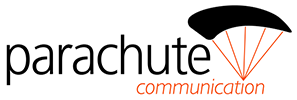I know it seems a weird question but is your brand getting in the way of you doing business? As a copywriter I can so easily fall into writing about The Brand, an idea of a business. Brands can be lovingly built up but, sometimes, bear little or no relation to the business they describe. For some businesses, I suggest that ‘brand development’ means, therefore, taking a step back.
The brand needs to serve the business. Don’t let the tail wag the dog – make your brand do its job. And that job is communicating the essence of your business. So brand and business should be as one not living two separate lives.
The purpose of Brand
‘Brand’ to so many people means logos and colour palettes, typefaces, clever straplines and campaign themes full of motivational copy. Of course these things matter – as a copywriter I’m responsible for some of it! But brand is just a carrier, a vehicle that surrounds the really important stuff about your business. What you do and how for the people that matter should be reflected 100% in the brand. You need nothing else.
When a big ‘household’ name announces a rebrand, or brand development exercise, you hope all that money has gone into creating a more suitable ‘vehicle’ to transport the business. Something employees can embrace, customers be proud of and prospects seek out. The regular practice of updating logos to reflect what the business does is important ,for sure. But ‘modernising’ the look because the current one offends your design agency isn’t money well spent. Better to leave the old one in place. At least people recognise it.
So when it comes to your content, you need to portray authenticity through the brand, rather than create a sense of top show. What’s behind the scenes? After all, the whole point of brand is flagging up that you exist and why in order to generate quality leads…
What do you do, exactly?
Seems like an easy thing to explain? Not really. Unless you’re a seasoned networker or sales manager you might struggle to be precise and snappy in your answer. Even then it could still be wide of the mark. The forward-thinking business grabs every opportunity to add value to their core offering which in turn changes the nature of what they do – or at least adds to it. Is your communication keeping up with your business – as it exists today? If not that would seem to be where brand development is needed.
On the other hand change might be imposed on a business. Technology is prompting many to re-think what they do for their customers. For, accountants, increasing automation is leading this established sector to reinvent itself as…business advisors?
So when, in the early days of working with a client, I ask them to explain what they do, there can be a degree of pausing and considering. Wriggling around even.
Where you fit into your customers’ lives is something that needs reviewing from time to time. Don’t make people put two and two together. Or worse still, guess. You might not fit neatly into a single category. Maybe different customers get different things. That’s OK – get it all out in the open – but you need a starting point. Understand the space that your competitors inhabit because that’s the direction towards which your customers will head.
When I’m helping clients plan and write content, I need to know what I’m dealing with. I don’t do generic content – I want my clients to have an original voice. Maybe you’re engineers with an innovative problem-solving approach. Or a personal trainer who addresses head on the fact that a lot of people hate exercise. That’s what the brand should help to explore.
How do you do what you do?
When you hear people talk about what they do, aren’t you keen to hear how they do it? Isn’t that critical to understanding what they do differentiating them in your mind from their competitors?
You might claim to be the best training organisation in the south. In fact, this might be an important keyword for you. But what makes you think you’re the best? Define ‘the best’? Is it possible to prove or even relevant to your brand? This is when you might experiment with straplines. Go ahead – sometimes it can underscore what you don’t do. Just beware of getting tied up with clever (brand) words. It’s plain words you need to describe your business at this level of your brand development.
The fact is you know stuff that others don’t. That’s why you do things in a way that your competitors wouldn’t dream of. You know your customers and what they need. So go on, tell us about it. Put the real case studies together. Get a bit technical. But always be able to answer the ‘so what?’ question. “It’s air-cooled,” says the sales person. “That matters?” says the customer. “Well it used to be water-cooled.” Satisfying ‘so what’ means explaining properly the benefits of the features!
The how-you-do-things approach is, I believe, today’s version of the USP. Rather than rack your brains for a Unique Selling Proposition (because ‘unique’ is always a difficult one to prove) put forward a more powerful and solid case that embraces your philosophy, values, approach, product offering and service to customers.
Then your content really does have legs – it starts to differentiate you and single you out as exactly the business your customers are looking for. And you’re starting to develop a brand that will work hard for your business.
Who do you do it for?
Just to recap – we’ve considered what you do and then how you do it. So now the most important question: who do you do it for? The answer is (of course) your customers – the reason you exist, and do what you do.
We know how easy it is to lose sight of what you do. So the needs and wishes of those customers your business seeks to serve are even more likely to get lost in the day-to-day of business life.
Yet, reflecting the needs of your customers is the single most important thing your brand can do. Otherwise you can’t properly engage with them. Can’t communicate effectively. Website content, videos, blogs, social media just won’t work for you. Face-to-face interactions can’t possibly be as successful.
Content needs to know what you do for them, why they should buy from you, how you solve their problems, how they use your services, the way in which you treat them… Content needs to prove you know your customers inside out. (And like them.)
The more you know about your customers and their influencers, the more relevant your brand and the harder it’ll work to help you meet your objectives. Not just in terms of what to say – but how and when. Where do you find these customers? Digital platforms are such shiny bright things but you won’t need them all – just the ones that reach your customers.
Just like your business, developing your brand means taking on board your customers’ needs, wants and behaviour.
And so to Brand
What + How + Who = Brand. Now you have something to work with – a strategy for your brand development. Your content has a purpose. It’s specific and revealing, and uses the right tone of voice and language. Logos, colour palette and typeface also have a brief to meet.
Then communicate regularly and consistently so you achieve recognition.
Your wider audience can help you communicate your brand. Employees, suppliers, partners. Of course it’s not possible to get everyone on board with the brand all of the time, particularly in large companies with a diverse and globally located workforce. But if you are creating an image of the company, the more people who embrace the values, chime with what’s communicated and wear the uniform wit pride, the harder the brand works for the business it represents.
(Thanks and credit to Pablo for the image)

